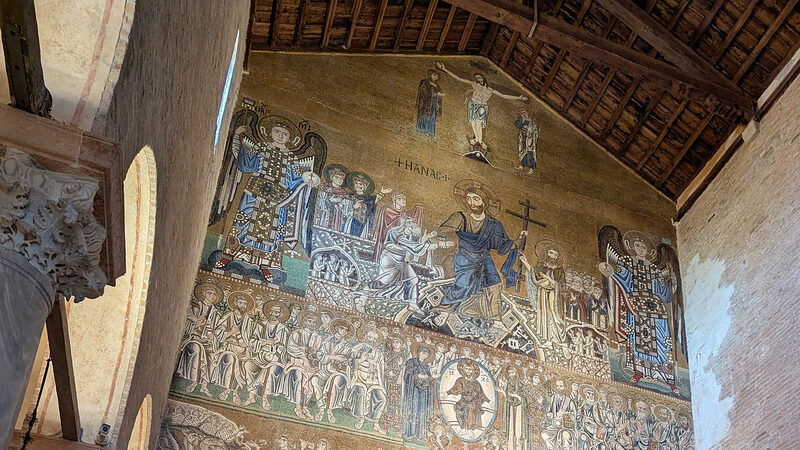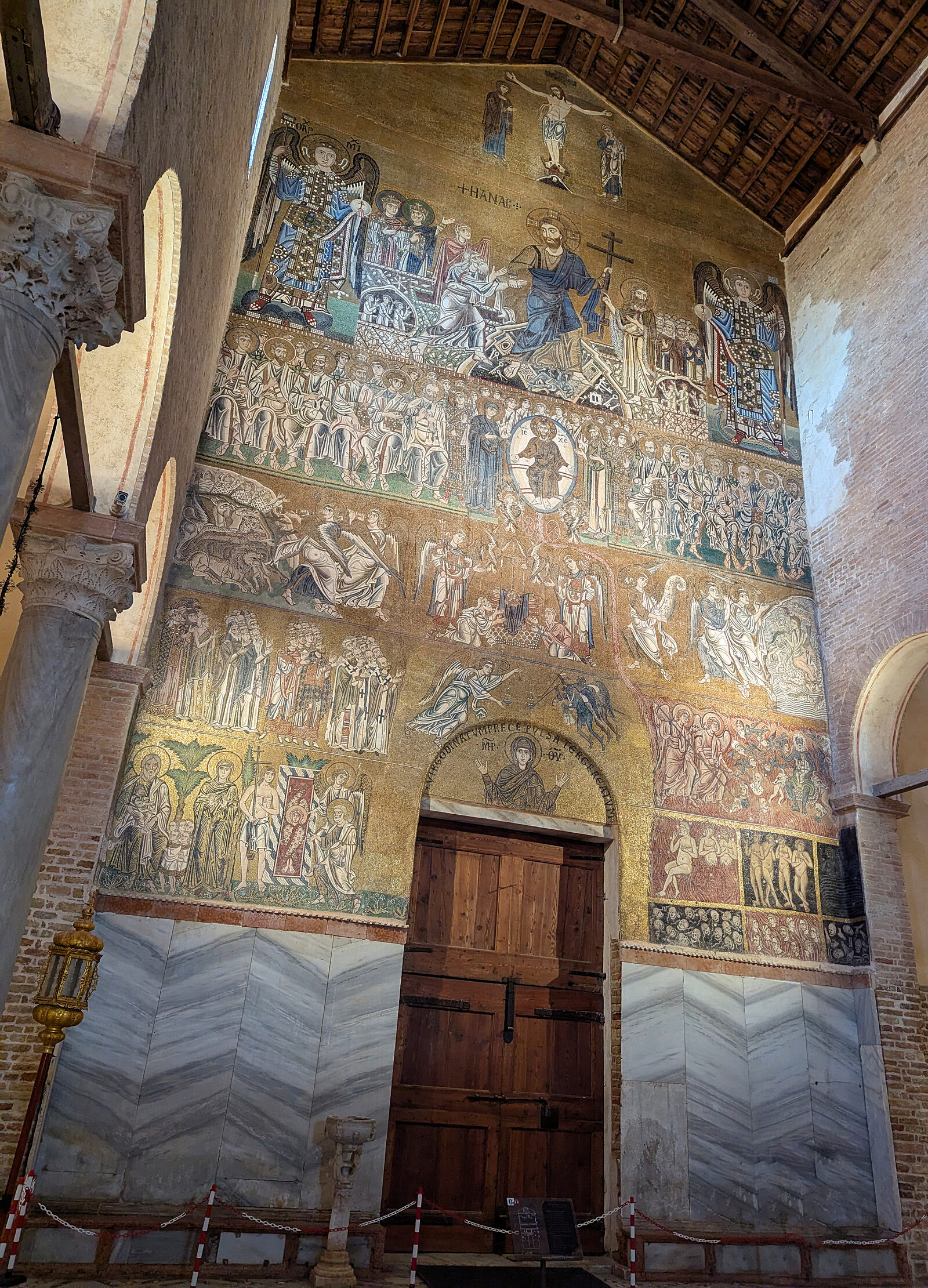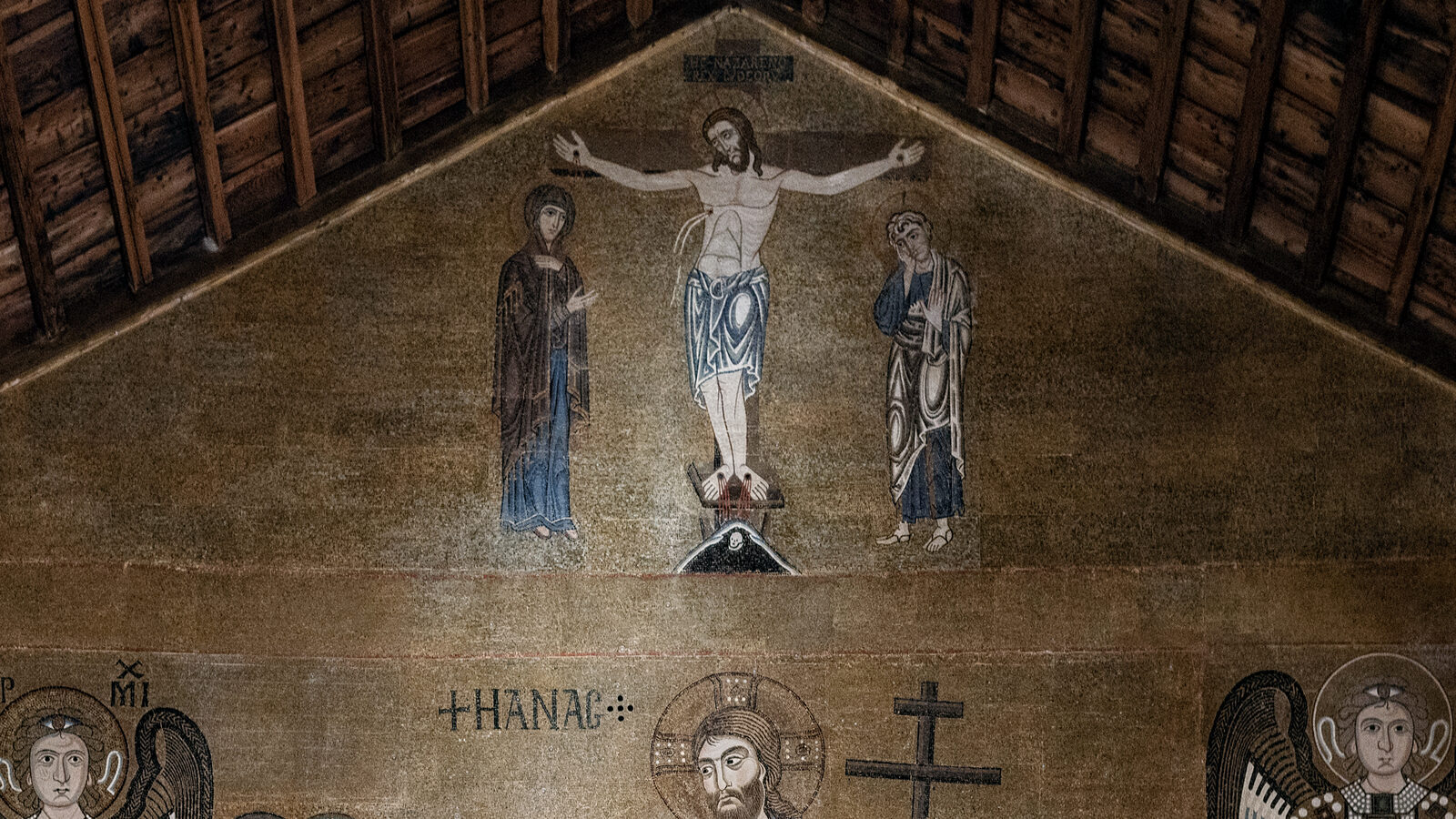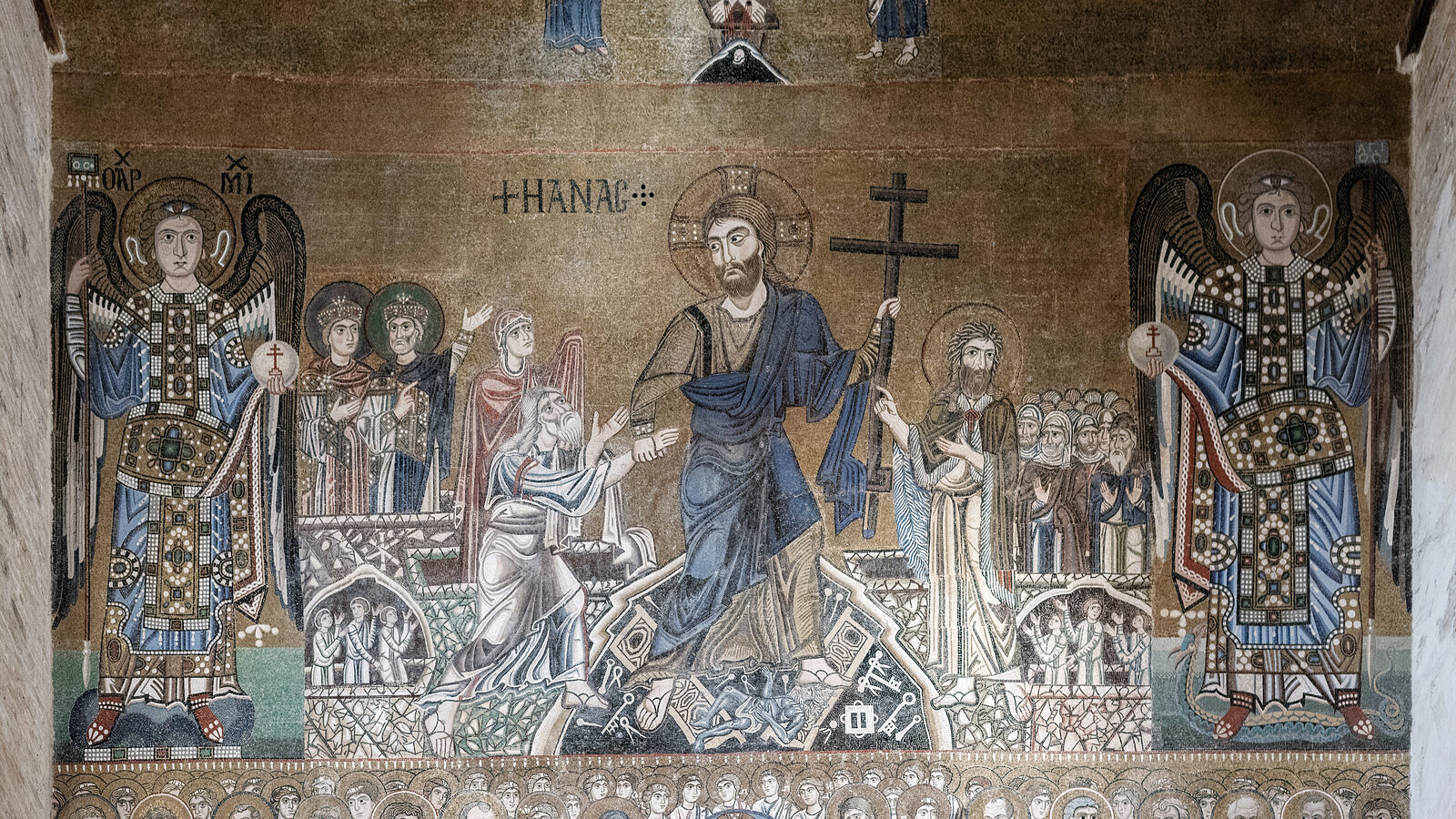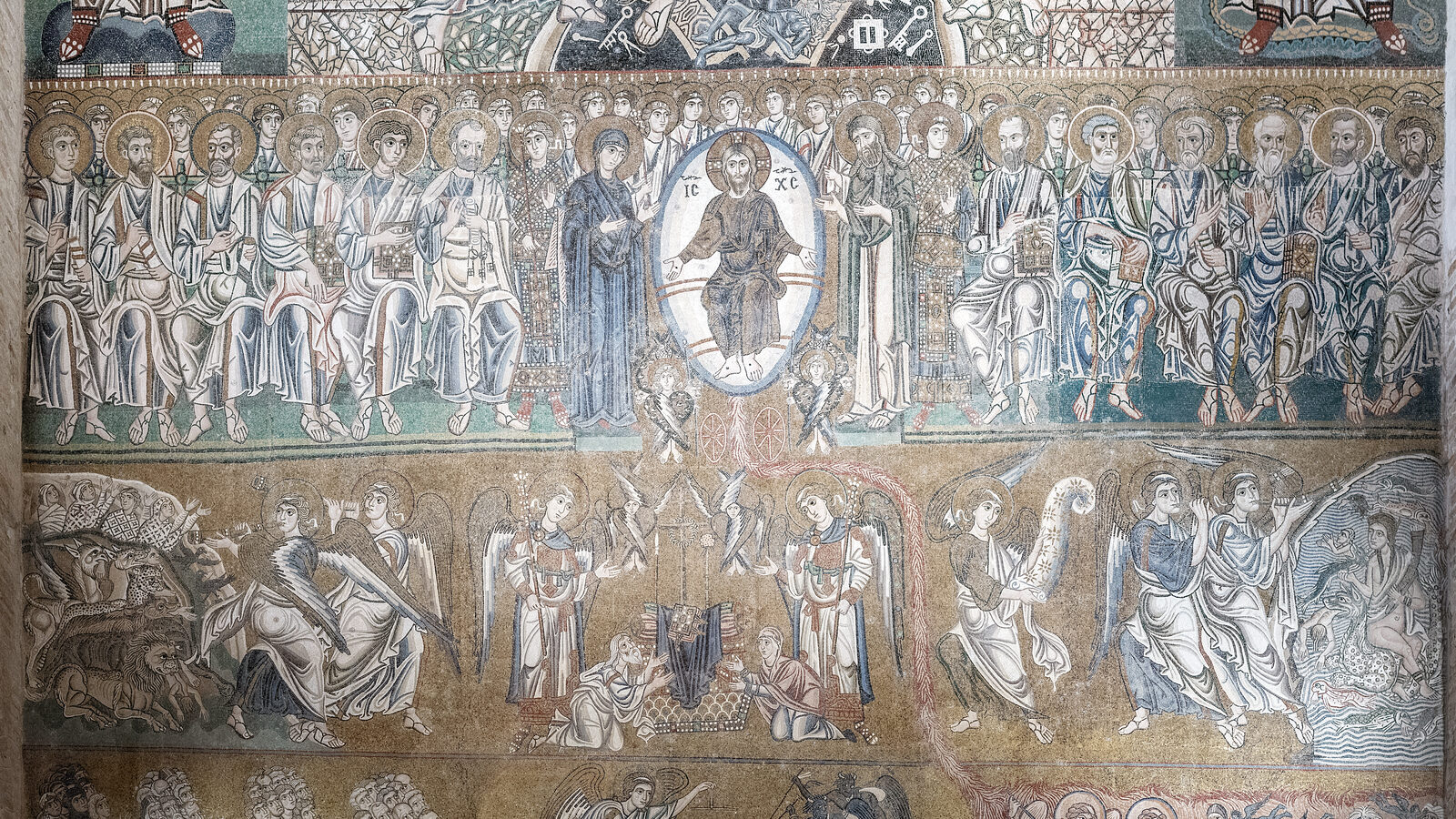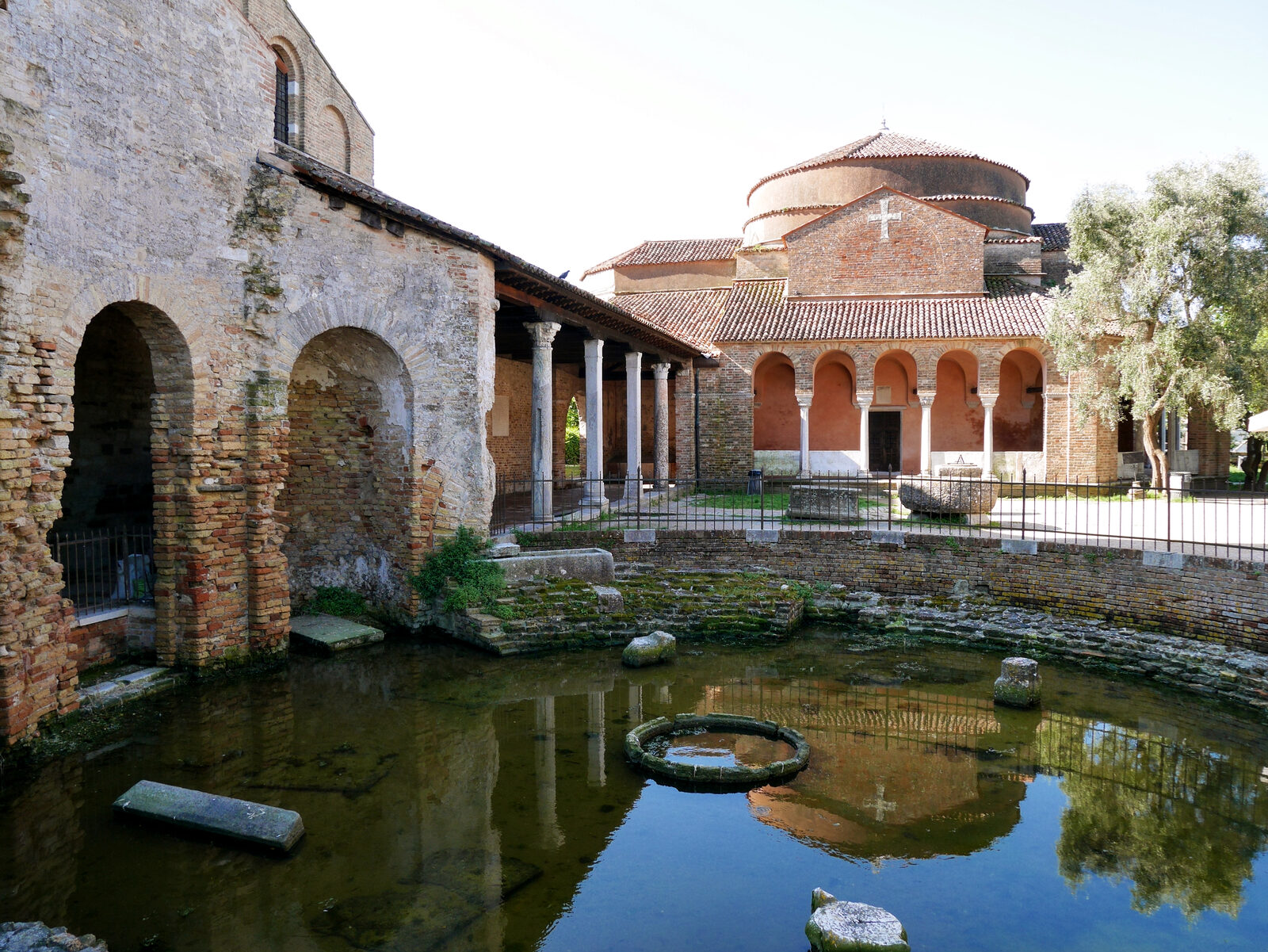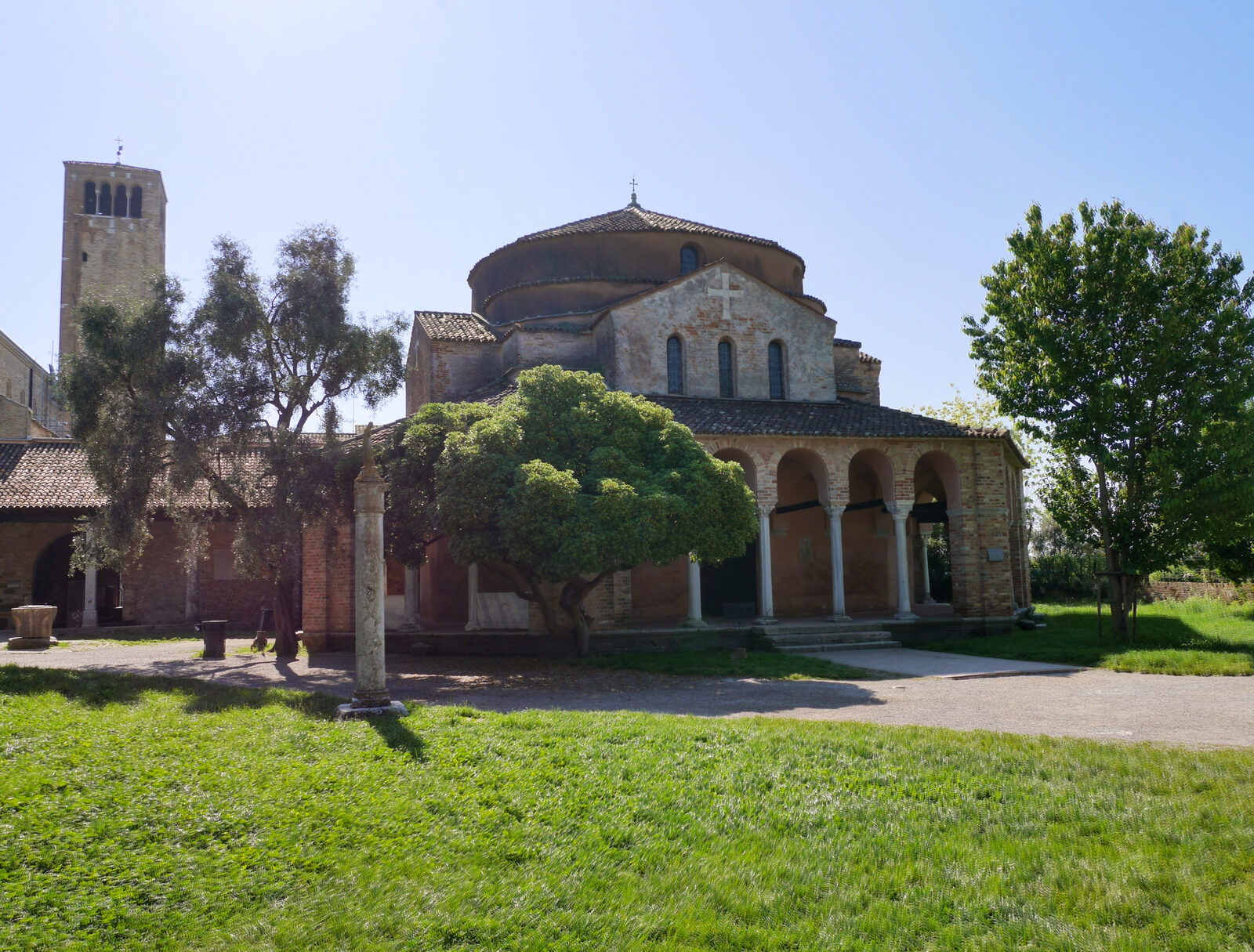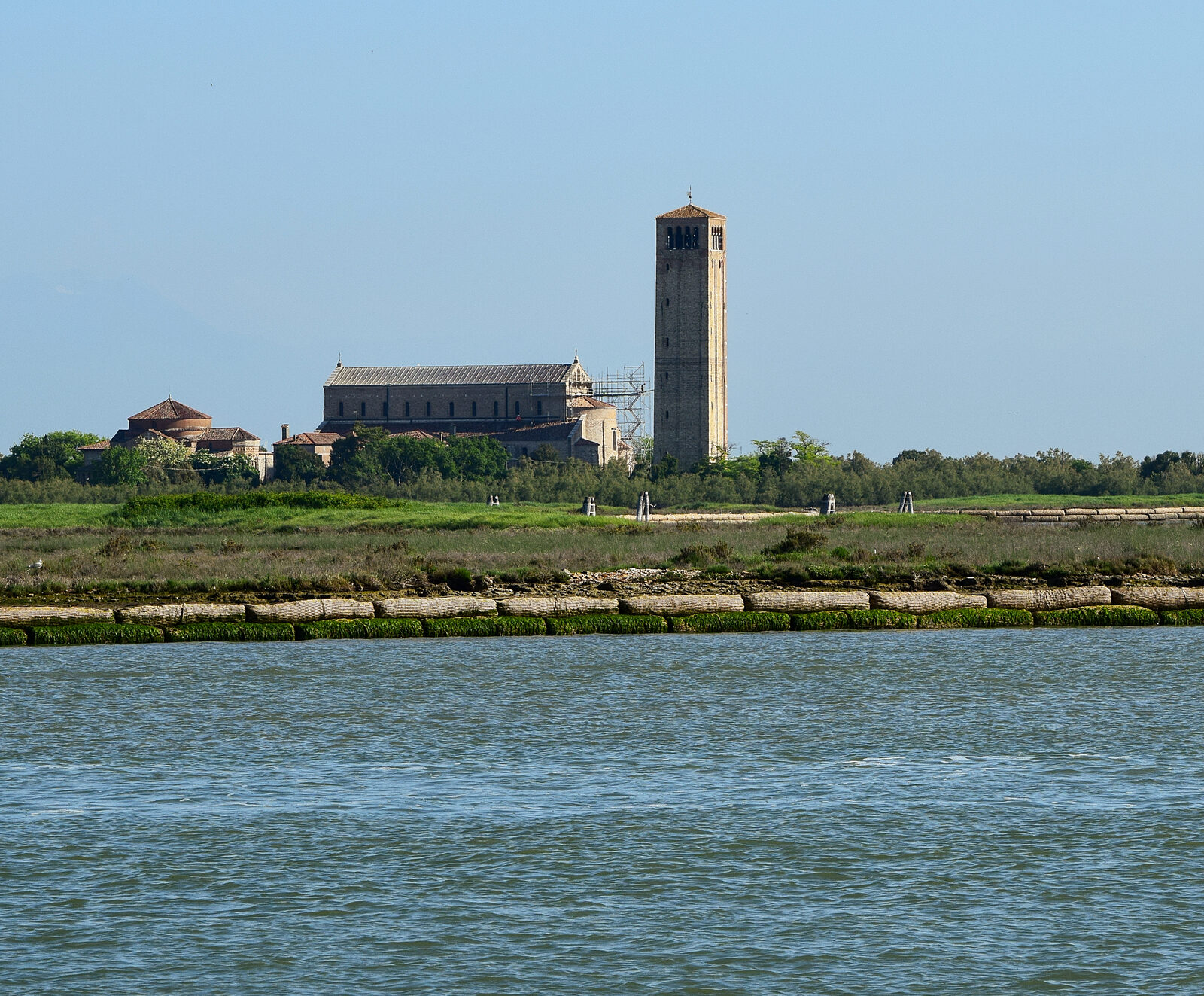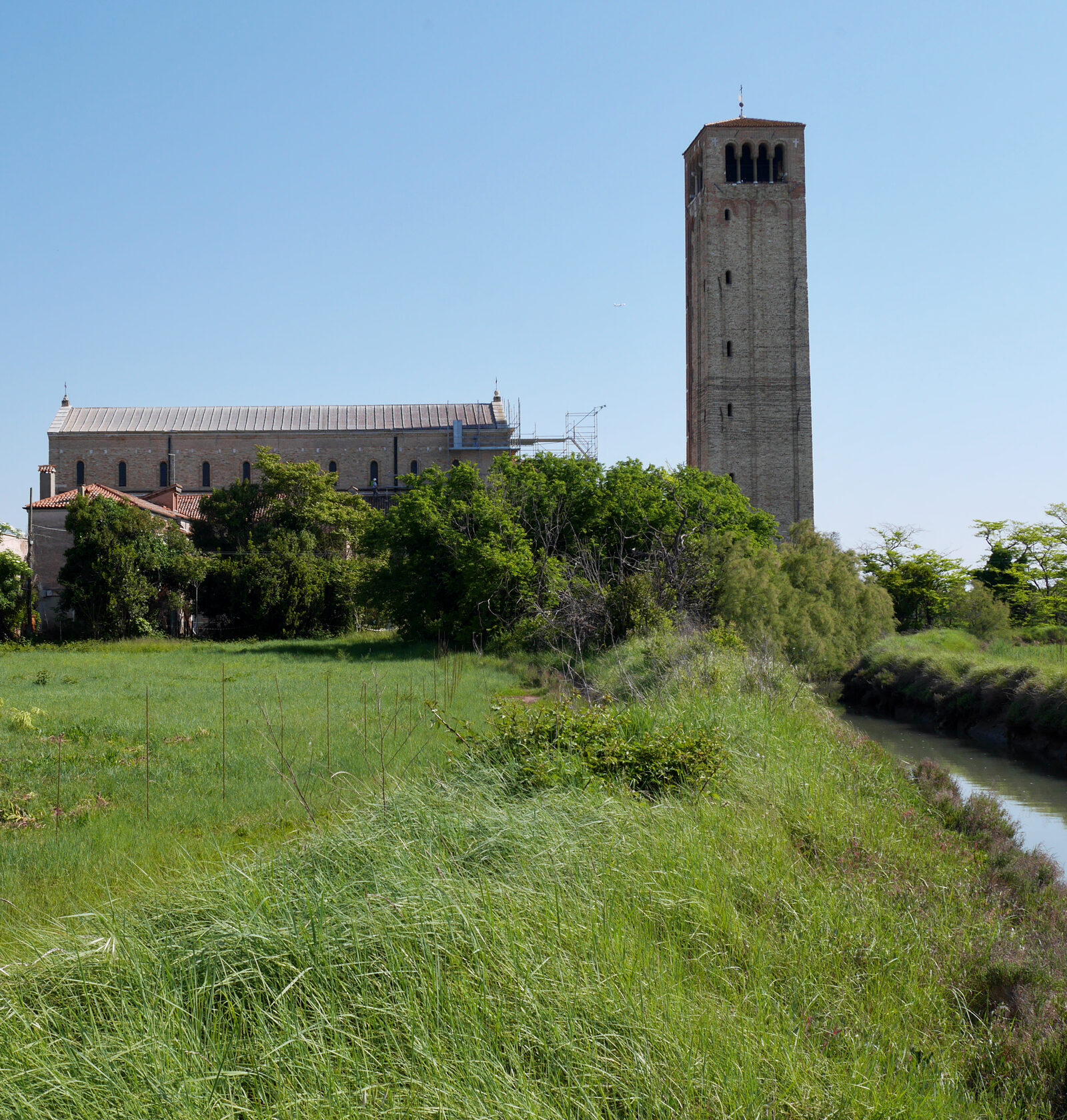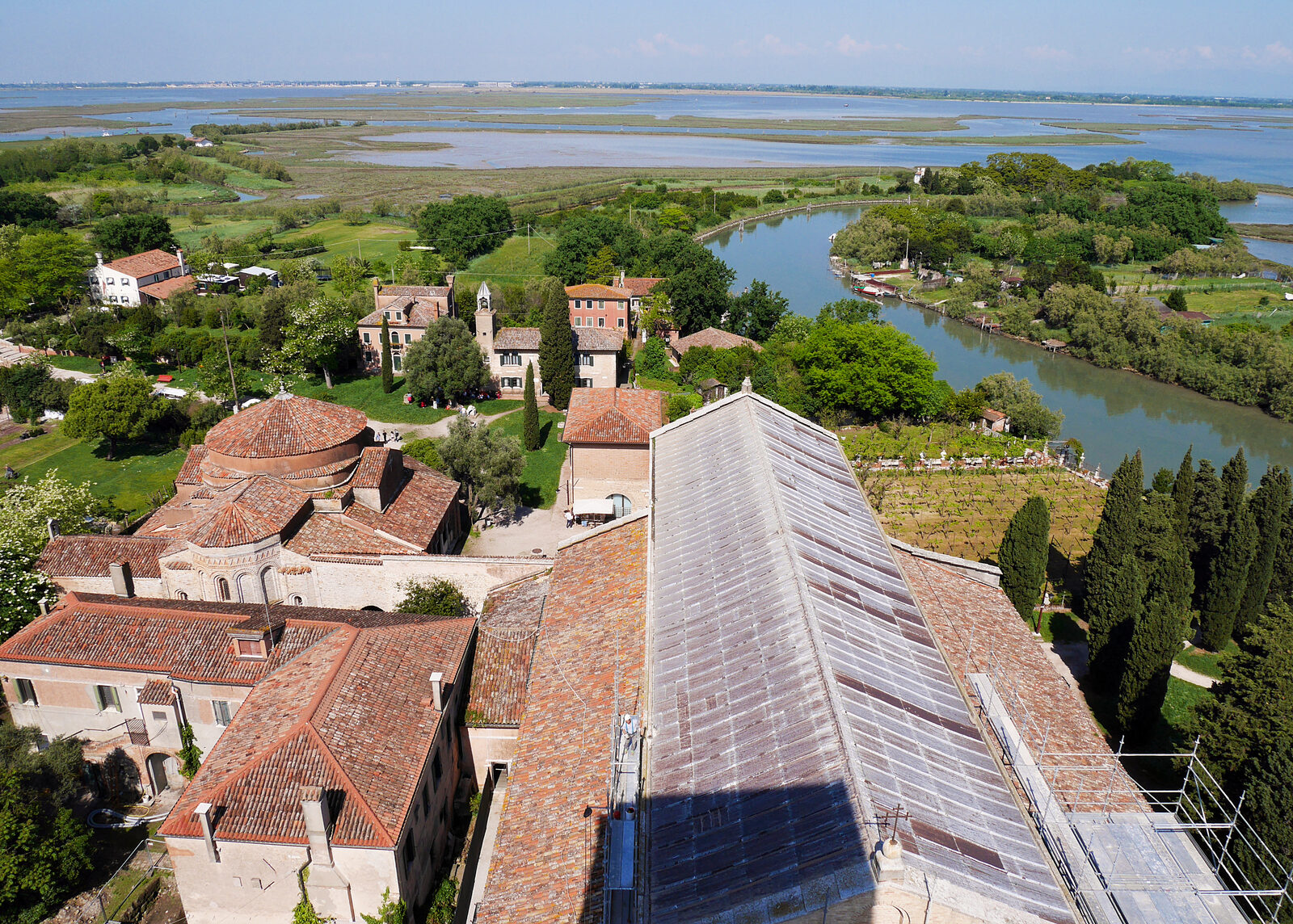Torcello island
Basilica di Santa Maria Assunta
Torcello Cathedral
Ancient cathedral adorned with remarkable mosaics and surrounded by lush greenery.
Torcello
+39 041 730761
Standard admission is €5. Free entry with a ticket for Basilica di San Marco.
Additional resources
What makes it special
Spectacular mosaics
The walls and floor are adorned with Byzantine-Veneto mosaics dating from the 12th and 13th centuries. The apse features a mosaic of the Madonna and Blessing Child, while the entrance wall displays a powerful Last Judgment scene.
One of the oldest churches in the lagoon
Dating back to the 7th century, this former cathedral is the oldest surviving Byzantine-Romanesque structure in the Venetian lagoon.
Closer to the original than most
As Torcello's significance decreased starting with 14th century, the church escaped extensive later reconstruction so today we see an aproximate version of the same church at the begining of the first millennium.
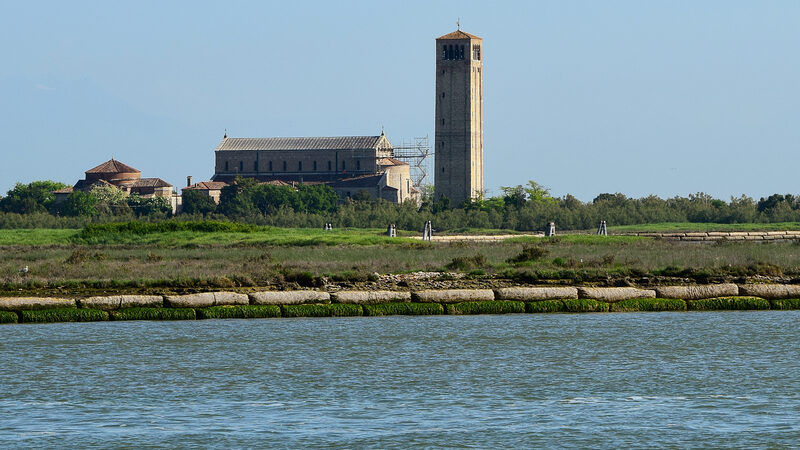
Your experience here
- Step inside a peaceful, simple, and largely unchanged ancient church.
- Get lost in the intricate details of the large mosaics.
- Appreciate how rare it is to find such a church in such a remote and tranquil setting.
- Consider climbing the bell tower for untamed views of the lagoon and a distant glimpse of Venice.
What the Last Judgement mosaic tells us
The vast mosaic, stretching from the church’s roof to its original entrance portal, tells more than one story.
Crafted in vibrant detail using tesserae (small, square pieces of glass with color sandwiched in the center), it’s visually divided into six vertical sections.
Top section
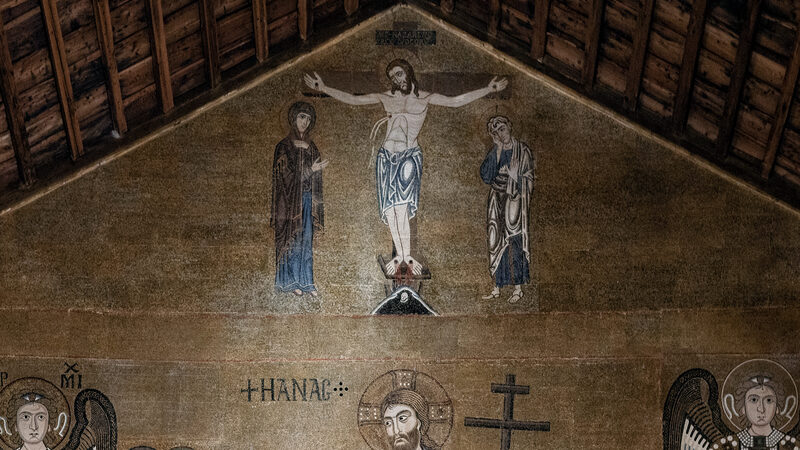
This is the Crucifixion: Christ is nailed to the cross, flanked by Mary, his mother, and John the Evangelist on the right.
Beneath Christ’s feet is a small hill: a reference to the stone tomb where his body was placed.
Upper-middle section
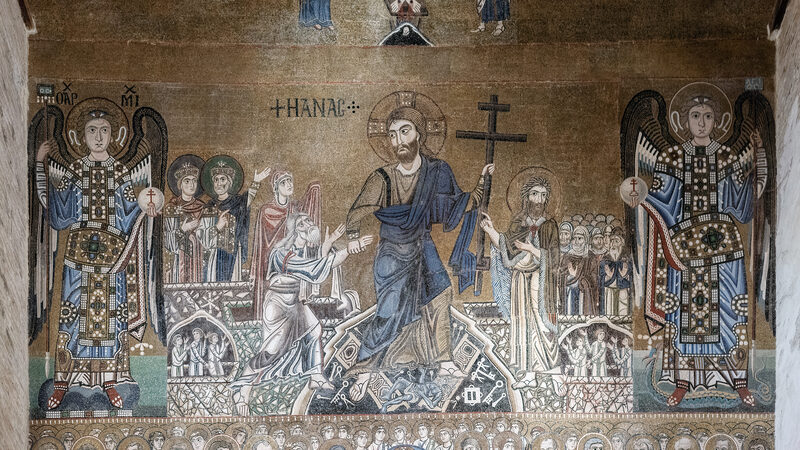
This is the Resurrection: a powerful and commanding image of Christ symbolizing the triumphant victory of good over evil.
He stands atop a dark mound scattered with keys and padlocks, representing his escape from the tomb. Beneath his feet, he crushes a devil figure.
Lower-middle sections
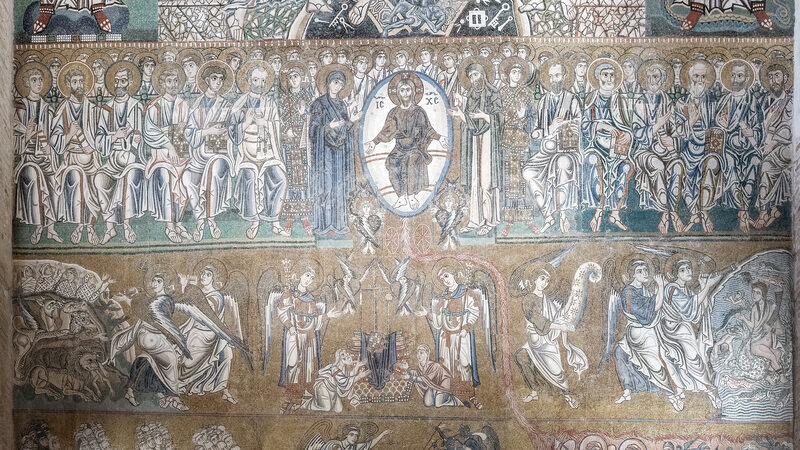
Here, Christ is seated in judgment, with the apostles on either side and angels behind him.
At his feet are two red wheels, marking the beginning of the flames of hell, which originate here and descend into the inferno.
One level down is a richly decorated vacant throne. On either side are the kneeling figures of Adam and Eve, begging Christ to take his place on the throne and to forgive them.
Flanking the throne are angels trumpeting the call of judgment, summoning the dead of the sea (on the right) and those who died on land (on the left) to rise and come forward and be judged.
Bottom sections

And finally, Judgment Day arrives.
Designed to be seen on exit, this section aims to leave a lasting impression with the congregation.
Above the doorway, an arch-shaped image of the Virgin Mary, the basilica’s patron saint, encourages churchgoers to live a life of prayer and secure their place in paradise (to the left) rather than the dark, gruesome alternative (to the right).
And what powerful images these two extremes are: on one side, spring flowers, shaded gardens, palm trees, and the peace of paradise; on the other, flames creeping up the bodies of the damned, skulls with snakes squirming through empty eye sockets, and heads literally burning in the fires of hell.
It’s a chilling warning: live righteously, or suffer the consequences.
It’s worth noting a detail that adds a touch of irony and wit amid the heavy imagery of damnation: as an angel tries to weigh the souls fairly, two demons cheat by slipping small white bags of flour onto the scales, tipping the balance in the devil’s favor.
It looks familiar, right?
The Last Judgment is a powerful concept shared across all Abrahamic religions.
Wikipedia offers a fascinating collection of different versions, from various faiths, eras, and artists.
Getting to the Basilica
Arrive by boat
There are two main ways to reach Torcello from Venice, both by water: take the DIY route on a public vaporetto or join a guided boat tour.
More details on both options are available in the transportation section for Torcello.
Continue on foot
Once you arrive at the island’s pier, you’ll need to walk about 0.7 kilometers (0.45 miles) along a paved path.
The path runs parallel to a canal, winding through peaceful surroundings, occasionally dotted with a few restaurants.
It’s a pleasant 10–15 minute stroll that leads directly to your destination
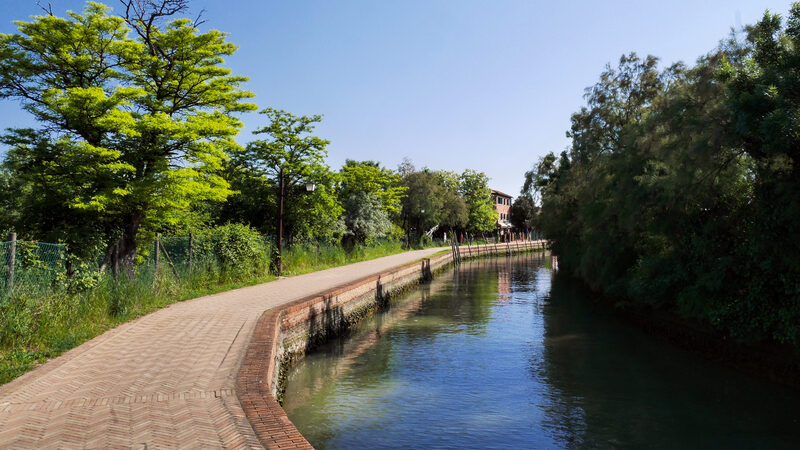
More Byzantine mosaics
Even if Basilica di San Marco might get all the attention when it comes to mosaics, it’s well worth stopping in Murano on your way to Venice from Torcello to visit the Basilica Santi Maria e Donato, home to a remarkable golden mosaic of the Virgin Mary and spectacular mosaics covering the entire floor.
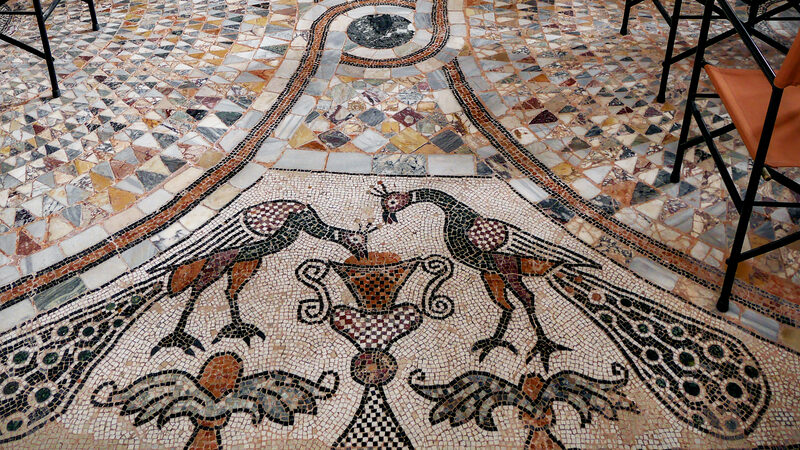
What to see nearby
These top spots are just a short walk from Santa Maria Assunta:
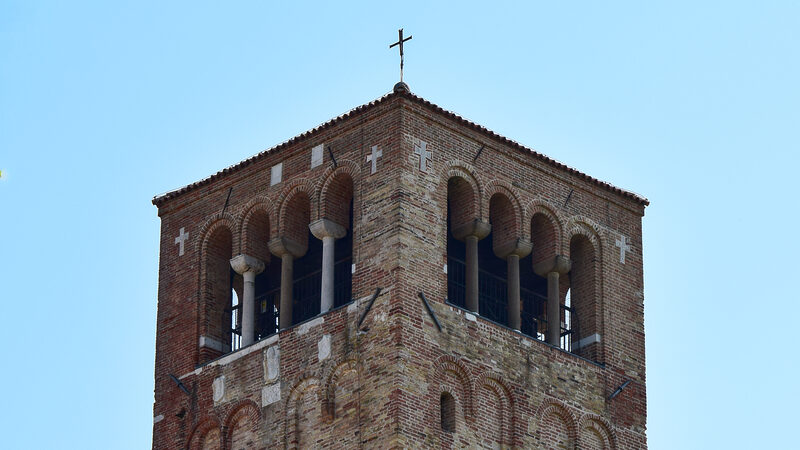
super close
Torcello Belltower